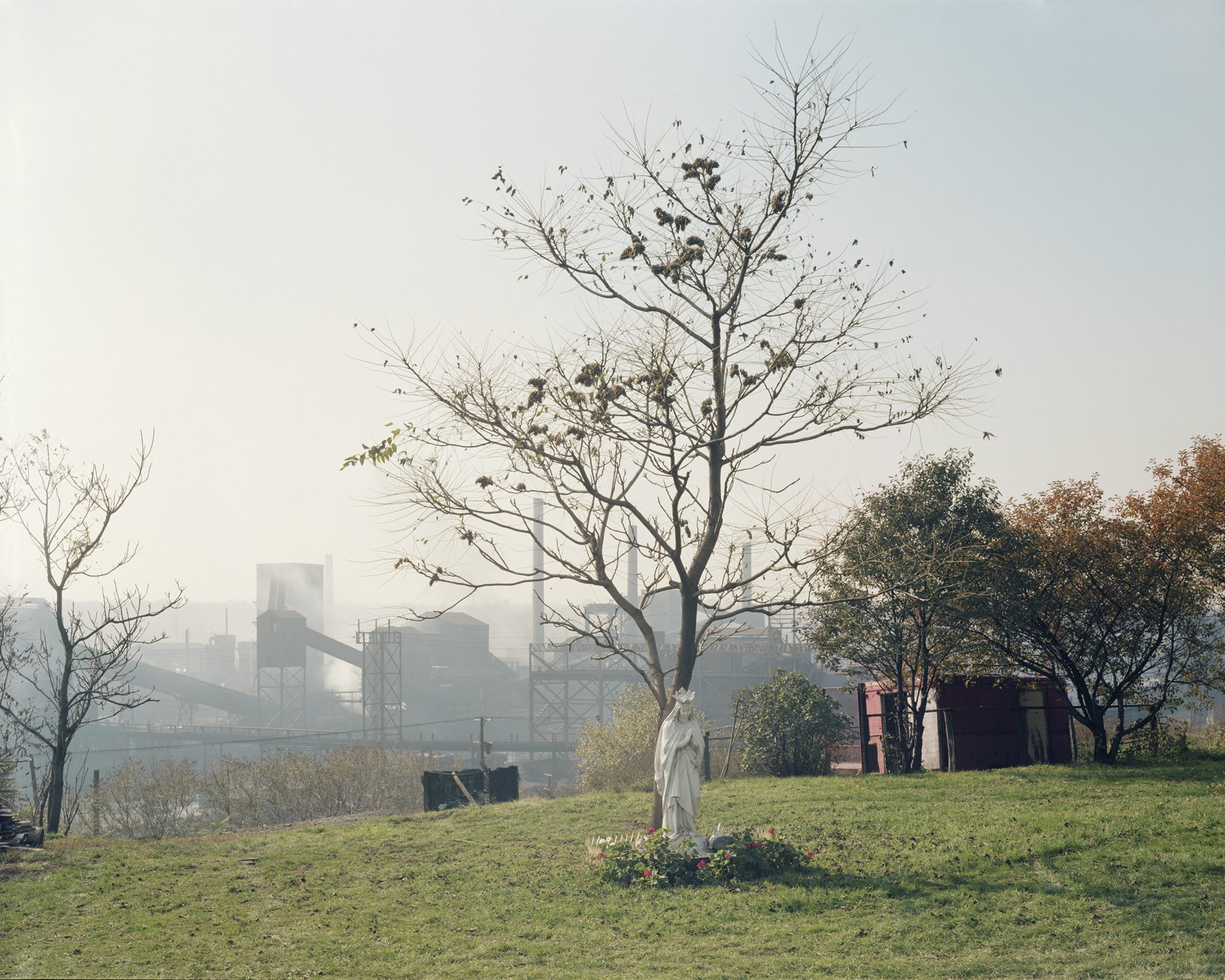Strange new monuments to consumer waste and photographic dispatches from the Rust Belt; war strategies of the Upper Rio Negro region’s Baniwa people and spurting, grotty fusions of pump machinery – our editors on what they’re looking forward to this month

EBB & Neïl Beloufa: Pandemic Pandemonium
Secession, Vienna, through 4 September
Long before the pandemic, Neïl Beloufa had produced the zany, freakishly prescient satirical miniseries Screen Talk (2014), about a hapless social and scientific elite faced with a world-conquering virus. Now Beloufa brings a similar dark humour to his video-arcade-cum-art-installation Pandemic Pandemonium, which includes the Screen Talk films as clues to solve the puzzles found in new videogame works and gaudy immersive installations – reward points mean the possibility of winning Beloufa artworks, or gambling and losing everything. The whole thing treats the breakdown of physical art-making during the pandemic, and artists’ turn to digital platforms – notably videogaming, blockchain and NFTs (you can mint your own customised ‘Hand of Vengeance’ graphic) – in a loopy future-forecasting of the artworld’s post-pandemic mutation. There’s a 2 Euro entrance fee, just so you know. J.J. Charlesworth

20 × 24 inches © LaToya Ruby Frazier. Courtesy of the artist and Gladstone Gallery
Bernd & Hilla Becher, Stephen Shore and LaToya Ruby Frazier: Rust
Sprüth Magers Berlin, 2 July – 27 August
While the American Rust Belt continues to loom over political discourse and elections, collected photographs by Stephen Shore, Bernd and Hilla Becher, and LaToya Ruby Frazier plot a path through postwar economic and social history in the US. Shore and Hilla Becher were known and influential to each other: the latter’s exact images of organ-like blast furnace structures echo in the shadowy backdrops to Shore’s work in the local area – his equally astute eye for structure is glanced with a warm curiosity for the affected lives of the community. Frazier’s ’00s landscapes and portraits of family and friends in a Pittsburgh suburb entertain tragedy in magnifying affected lives, but use her lens as their champion. The exhibition will hope to enliven each when set against one another. Alexander Leissle
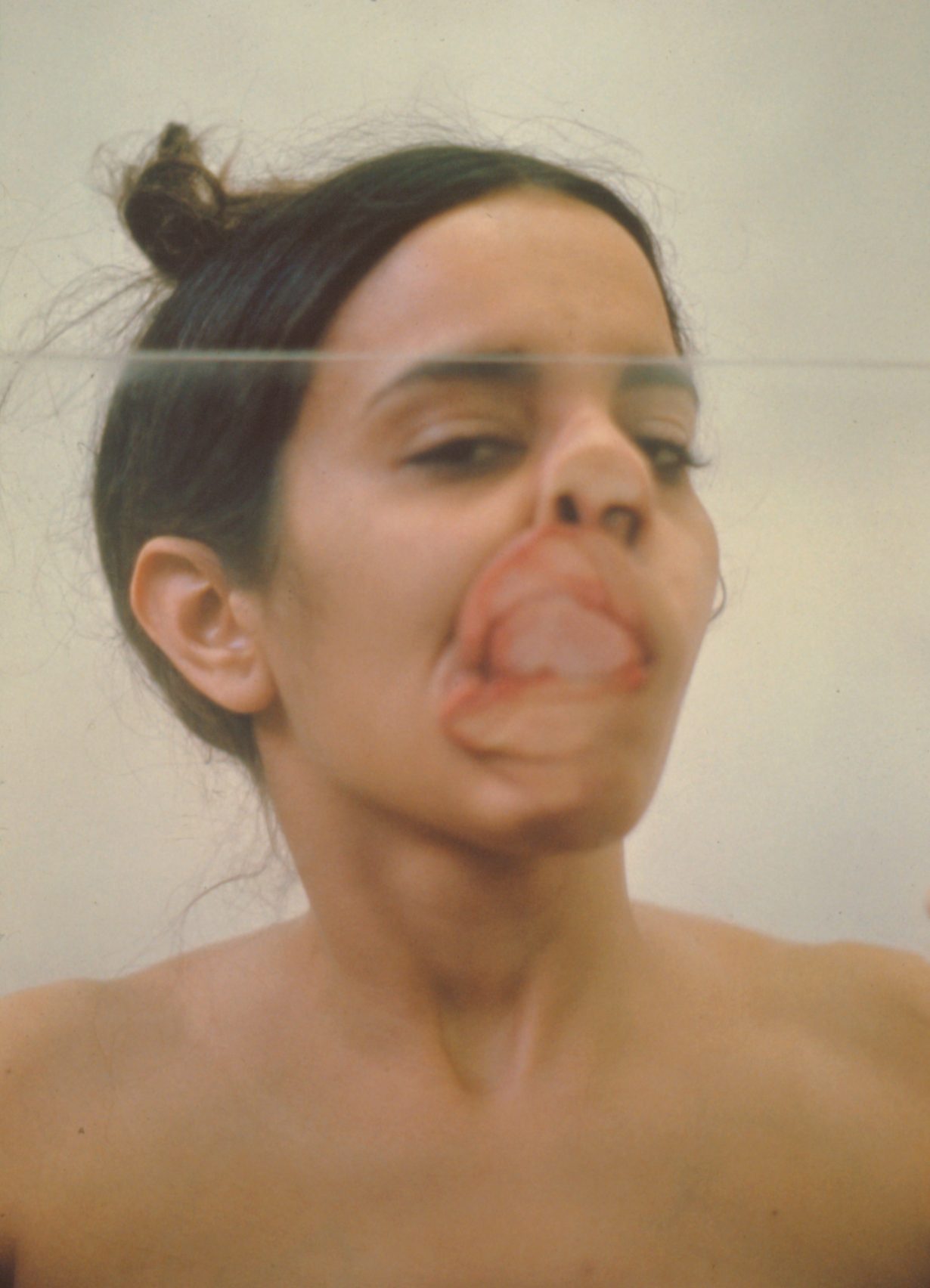
Les Rencontres d’Arles
Various venues, Arles, 4 July –25 September
The summer-long photography festival kicks off this July, with its usual mix of historic shows and showcasing of contemporary and young photographers this year, vaguely themed around processes of revelation and erasure. One of the pièces de résistance will be a wide selection of works from Vienna’s Verbund collection, focused on the women photographers (from Nil Yalter to Ana Mendieta to Senga Nengudi) who during the 1970s challenged and reinvented the codes of representation of women as a way to reclaim ownership over their own bodies – a feminist undertaking that feels loaded with renewed urgency. And there’s plenty more to see across town, so much so that some of it usually spills out onto the street walls in guerrilla exhibitions of sorts – not least the recently fully inaugurated Luma Arles building, presenting the first French retrospective of Accra- and London-based photographer James Barnor, and showings elsewhere for younger artists such as Noémie Goudal, Sathish Kumar or Frida Orubapo. Louise Darblay

Tenant of Culture: Soft Acid
Camden Art Centre, 8 July – 18 September
‘Fashion acknowledges its own instability and employs that as a system,’ Tenant of Culture aka the Dutch artist Hendrickje Schimmel told ArtReview’s Ross Simonini earlier this year. ‘But somehow the idea of trendiness is looked down upon in art, which is concerned with autonomy and the individual genius.’ Schimmel stitches together the detritus of discarded clothing – foam inserts, ripped-out buckles, backing fabric – and sculpts them into strange new monuments to consumer waste. These objects, caught in some state between transformation and decay, speak to how meanings shift as materials change, and fashion’s rampant cycles of ‘overproduction’. At Camden Art Centre, Schimmel will create a site-specific installation triggered by research into female labour in the laundry industry of nineteenth-century Britain. En Liang Khong
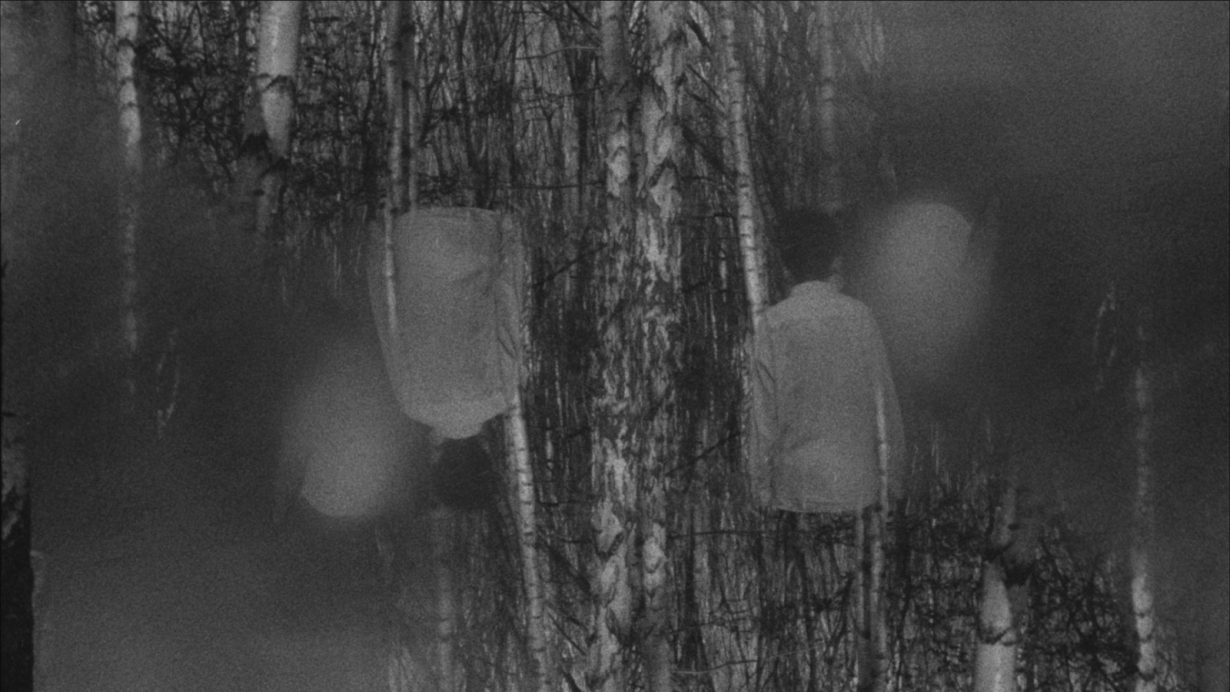
Chris Zhongtian Yuan: All Trace is Gone, No Clamour for A Kiss
V.O Curations – 56 Conduit Street, London, 8 July – 11 August
Abbreviating a line from Toni Morrison’s Beloved (1987) for its title, the first solo show in the UK by Chris Zhongtian Yuan will display a series of ceramics, drawings and a new film – a conversation between two individuals over five chapters, shot in 16mm black and white and scored by trumpeter Kevin G. Davy. Installed works will speak to Yuan’s typically fragmented and reconstructive approach to film, sourcing found and archive footage, sound and traces of written and spoken language. Wuhan Punk (2020), a disquieting exploration of a disappeared punk musician, layered archive materials with game-engine animation. An anticipated left-turn into more analogue film methods here – to explore the ‘tenderness and cruelty of migration’ – infers a doubling-down of his amorphous visual language, and a similar search for something tangible in absence. Alexander Leissle
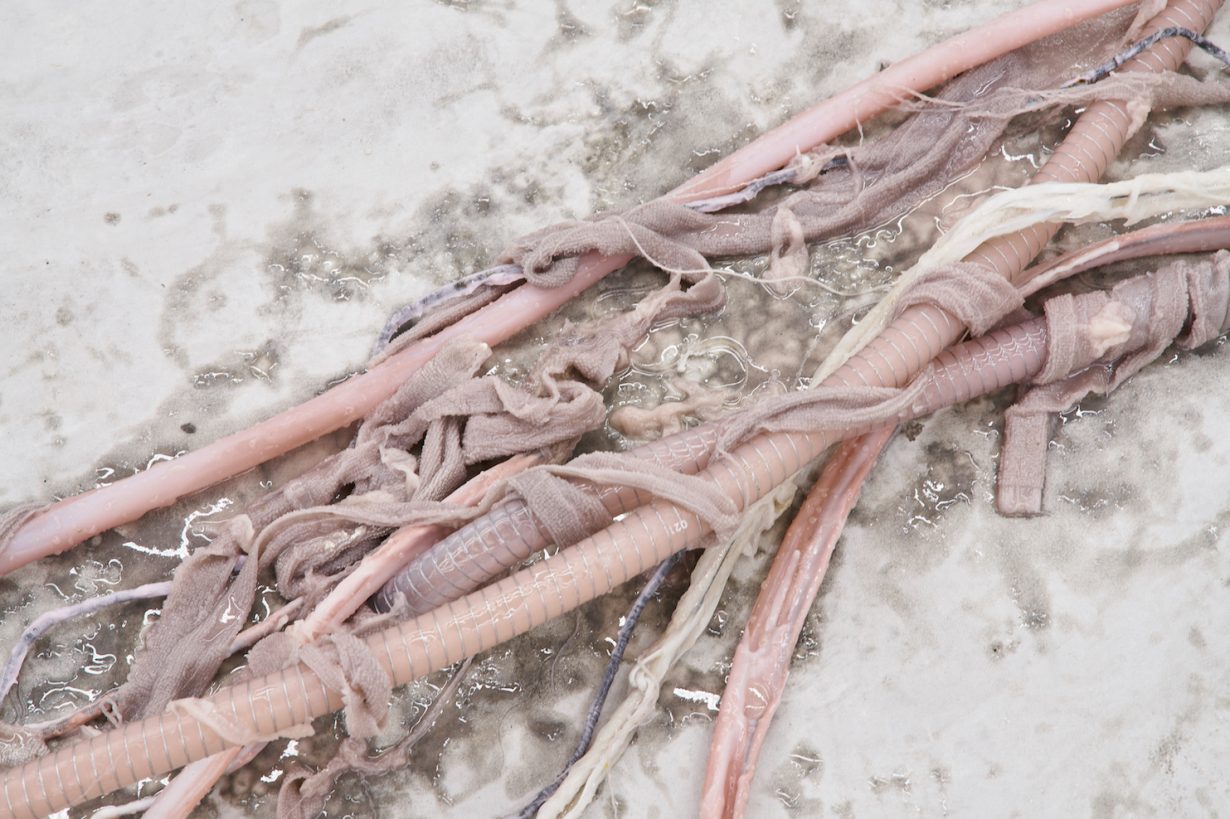
motors, and other mixed media Photo: Zhang Hong and Antenna Space
Mire Lee: As We Lay Dying
Kunstmuseum Den Haag, 9 July – 27 November
Straight out of wowing – or repelling – visitors to the Venice Biennale, Korean artist Mire Lee brings her queasy, grotesque, weirdly touching sculptural installations to the austere Art Deco geometry of Den Haag’s Kunstmuseum. Grotty fusions of pump machinery, pneumatic hoses, scaffold, silicon tubing and caked clay, Lee’s objects writhe and contort, inflate and expire, spurting unspecified liquids, goading us to half-believe they’re alive – even if they sometimes seem more like flayed organs or a man-machine experiment gone wrong. Pushing against the shiny weightless bodies that inhabit our online world, Lee’s shuddering hybrids signal a turn back to the pleasures and discomforts of base materiality. J.J. Charlesworth

Nakoada: estratégias para a arte moderna
MAM Rio de Janeiro, 9 July – 29 January 2023
There has been a tension in Brazilian museums and galleries of late: a difficult acknowledgement that the country’s modernist heritage, with its playful formalism (which continues to have influence on the art being made a century later), has become inextricably linked with questions of colonialism and privilege. Lasar Segall and Glauco Rodrigues, both included in this group exhibition, are cases in point, their work born to the European tradition as much as being a product of Brazil. How then to square this with the increasing recognition of indigenous-made contemporary art and its autonomous history? How to write a history that incorporates both lineages on equal footing? Enter the concept of ‘Nakoada’, a war strategy of the Baniwa people of the Upper Rio Negro region, in which knoweldge of the other proved a powerful strategy for survival. Here, the work of the Mahku collective, Zahy Guajajara, Jaider Esbell and others provide new readings of modernist works by non-indigenous makers including Alfredo Volpi, Antônio Gomide and Candido Portinari. Oliver Basciano

Koo Jeong A: [YONG DONG]
Pilar Corrias, London, 14 July – 20 August 2022
The artist’s multifaceted, elusive work demonstrates an interest in intervening in, manipulating and refashioning forms, frequently merging the everyday with the celestial. Recently, this has included canvases of phosphorescent stars, sculptures of ferrite magnets or even a glow-in-the-dark skatepark. And here Koo continues this open-ended, dreamy thought in a series of paintings of a hydra-like beast. The creature was apparently inspired by the motifs employed by South Korean amulets, designed to protect the user from demons. Koo’s guardian creature has taken shape as the crimson silhouette of a multi-headed eagle – a cipher, the artist thinks, for a yearning restlessness. En Liang Khong
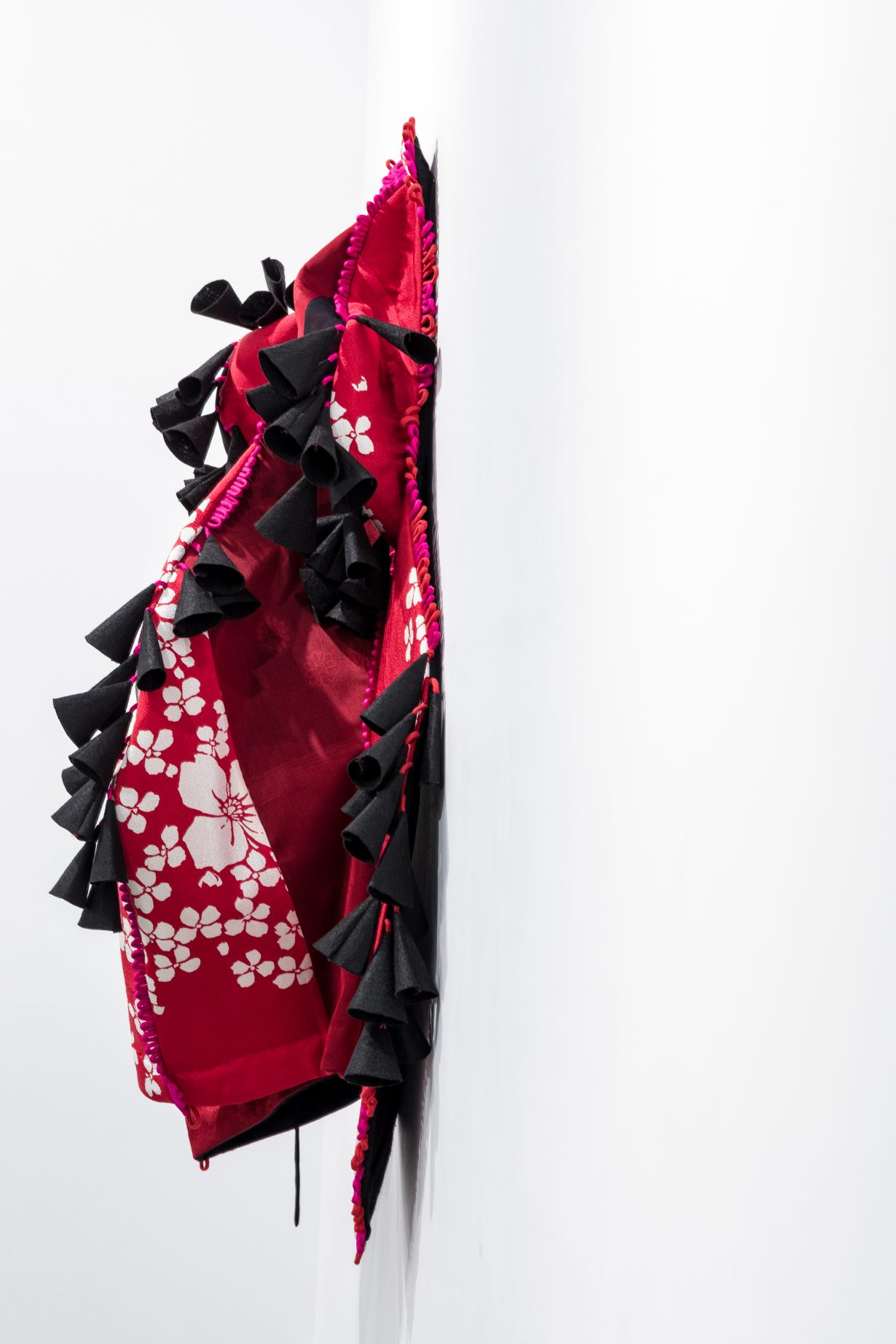
Kallol Datta
Experimenter – Hindustan Road, 15 July – 23 September
The Kolkata-based clothes-maker (known for his research and subsequent experimental designs based on native clothing practices across Africa, East and South Asia) will present a series of textile sculptures inspired by his residency at Aomori Contemporary Art Centre last year. Furthering his investigations into ‘ideas of cultural sustainability, post-war politics in Japanese clothing edicts, episodic events and personal memories that become as much part of the textiles as the threads they are woven with’, Datta creates new patterns and forms by blending donated clothing from the Late Showa Period in Japan with Indian sarees made between 1945–1989. In this cross-cultural exchange between materials, Datta works to preserve the memories and history embedded in each piece of textile, while weaving in his wider inquiries into the nature of ‘work and production’ – and of ‘labourer and user’. Fi Churchman
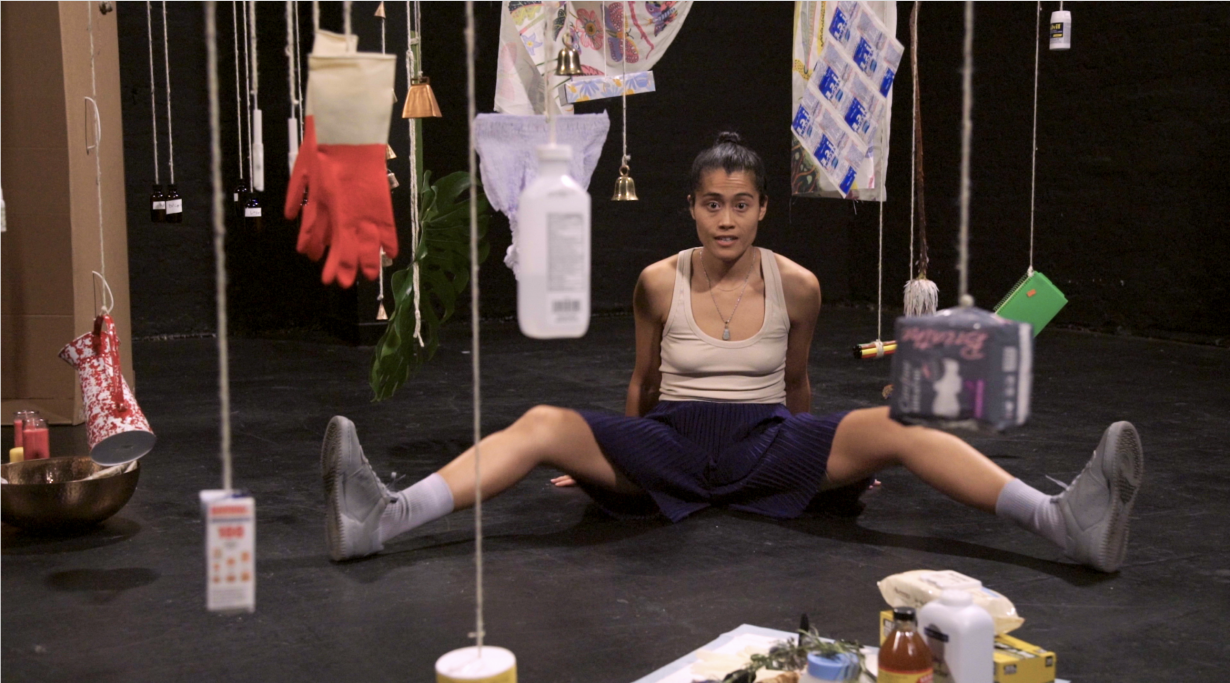
Front International
Various venues, Cleveland, 16 July – 2 October
The second edition of Cleveland’s FRONT International – titled Oh, Gods of Dust and Rainbows and curated by Tina Kukielski and Prem Krishnamurthy – is set to ‘embrace art as an agent of transformation, a mode of healing, and a therapeutic process’. That, of course, has something to do with the last three pandemic-riddled years, and how many of us became disconnected and isolated during this time. Big goals then. But how exactly does art act as an agent in all of this? One way, it seems, would be to utilise it as a means of reestablishing connections between people and places again: this year, the Cleveland-based art exhibition is working with ‘non-traditional’ art spaces in a bid to increase its accessibility, as well as reaching out to institutions in its neighbouring cities Akron and Oberlin, which will hold parallel exhibitions. Another way, of course, would be to include participating artists like Every Ocean Hughes (whose recent installation and film One Big Bag addresses grief and what a ‘good death’ might look like), Asad Raza (whose multipart artwork, commissioned for this edition, will involve ‘outdoor sculpture, sailing and song’ in collaboration with ‘astronomers, indigenous scholars, architects, maritime organizations, marine biologists, musicians [and] poets’), and Kameelah Janan Rasheed (her 2022 video lucid dream: draft i is inspired by the practice of lucid dreaming, extending her ongoing research into rituals and rites). All of which will hopefully amount to a sort of collective coming-to-terms. Fi Churchman
